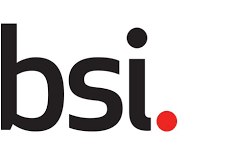Please be advised that a New Work Item Proposal has been loaded to the BSI Standards Development Portal for comment.
Any comments received will be submitted to the national committee “PH/9 “Applied ergonomics” for consideration when deciding the UK response to the associated Standards Development Organisation.
- Proposal: ISO/PWI 9241-222 – Ergonomics of human-system interaction — Part 222: Self-assessment of human-centred design process
Please visit: ISO/PWI 9241-222
Comment period end date:12/04/2024
Scope
This document provides a self-assessment of an organization’s human-centred design principles, processes, and activities throughout the life cycle of computer-based interactive systems, It also provides an overview of information given in the ISO 9241-200 series. It is intended to be used as an introduction and self-assessment guide to human-centred design (HCD). Its target audience are personnel responsible for and managing design processes, and it is concerned with ways in which both hardware and software components of interactive systems can enhance human–system interaction. It includes a self-assessment that allows organizations to understand and assess their level of awareness and practices with respect to the human-centred design approach and best practices for organizations and project teams within that organization.
This document does not provide detailed coverage of the methods and techniques required for humancentred design, nor does it address health or safety aspects in detail. Although it addresses the planning and management of human-centred design, it does not address all aspects of project management.
Detailed human factors/ergonomics, usability and accessibility issues are dealt with more fully in a number of standards including other parts of ISO 9241and ISO 6385, which sets out the broad principles of ergonomics.
Purpose
The purpose is to provide a simple self-assessment: information, not guidance, so users can discover and understand gaps in their knowledge and gain a basic benchmark regarding their human-centered design practice. Ideally, this will create an interest and desire, and be a gateway into the more detailed standards in the -200 series.
Many organizations, often low maturity organizations (with respect to HCD), don’t know where to start and/or claim it is too difficult to understand the published information on this topic, particularly international standards. For many topics, self-administered questionnaires or review of the practice within organizations provide a start toward change & entry to more detailed reviews or assessments.
The purpose is to provide an easy starting point and route to entry for low-maturity organizations than 9241-210, -220, and -221. To provide something accessible and concise; nothing that requires tailoring. To guide readers to the appropriate, more-detailed standards and to create a well-informed appetite for the remainder of the 9241- standards.
There is a 9241-210 standard that includes an evaluator-led assessment as an annex, a 9241-220 standard that is titled “Processes for enabling, executing and assessing human-centred design within organizations,” and 9241-221 is the process assessment model. This document is not intended to replace these; it is a self-assessment intended to attract readers to the other standards.
There are a number of ad hoc and informal self-assessments, typically in industry; this document is intended to formalize and regularize these various assessments.
This work is intended to (1) include an easily accessible self-assessment, (2) drive readers to the more detailed descriptions of best practice in ISO 9241-210 and (3) drive readers to more detailed assessments in ISO 9241-220 and ISO 9241-221.
If you have any comment or need more information, please contact Sami Ortiz
- Proposal: ISO/NP 21372 – Ergonomics — General ergonomic requirements and recommendations for service
Please visit: ISO/NP 21372
Comment period end date:14/04/2024
Scope
This document provides general requirements and recommendations based on ergonomic principles to improve the quality of service in situations between service providers and users (i.e., customers and citizens).
This document is intended for the following types of target groups:
1. Groups that provide services directly
– Service providers who provide services directly to users
2. Groups that plan and manage the services
– Managers who are involved in planning, managing, and developing products, system and/or service projects
– Those who procure products, systems, and services
– Those who plan and create services
3. Groups that evaluate services
– Those who evaluate services by conducting research on and identifying user needs and behaviours
Purpose
As the global economy grows, industries become more service-oriented. At the same time, there is a demand for higher quality and efficiency in the service field. There are two types of services: service provided directly by a human and service that provides information, products, systems, and environments without human intervention (i.e. service provided through the information on the Internet or service provided through the products, and there is no direct interaction between the provider and the customer(users)). In both cases, the perspective of consideration for the user as the recipient of the service is necessary.
Some services have an immediacy such that the service is consumed as soon as it is provided, while others have an intangibility that does not appear in physical form, such as human behaviour or verbal/auditory information. Therefore, designing and providing services may require different considerations for users regarding products, systems, and the environment.
The field of ergonomics has a design concept of usability, which is used in the development of products, systems, and physical environments. However, the intangibility and immediacy of services are different characteristics from products and environments, and there are no general ergonomic design methods and standards for services based on usability, and a general ergonomic design concept for services needs to be established. The requirements and recommendations of this document are intended to be applicable to various types of services to improve the quality of service in situations between service providers and users.

